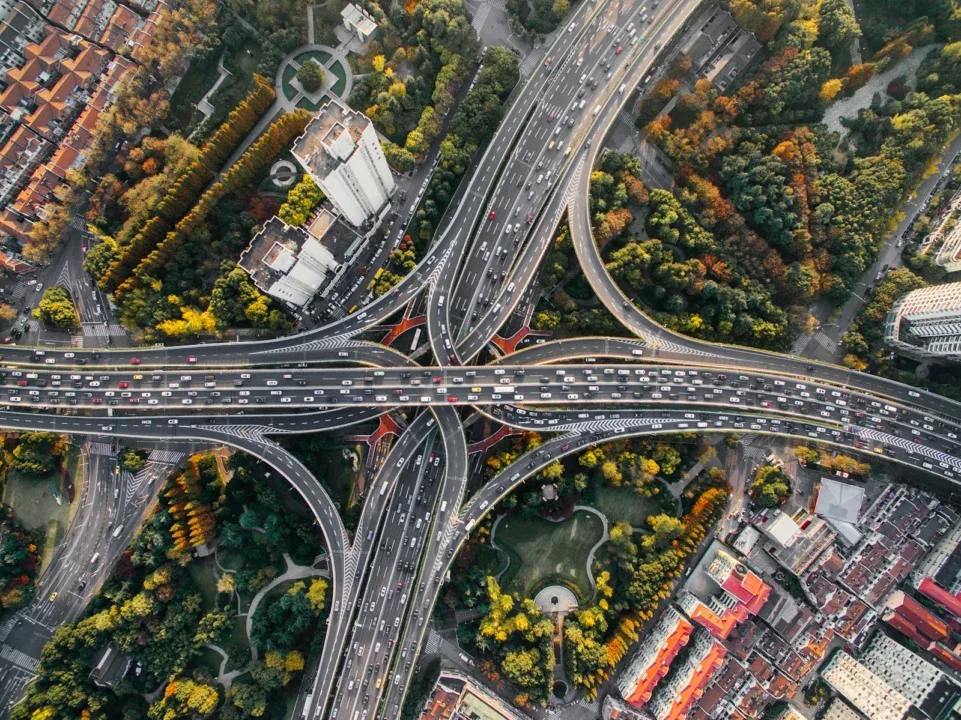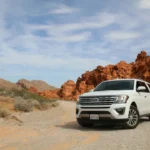Elimination of transport difficulties in different metropolitan areas is one of the primary goals of developed countries along with shelter, safe and sound health, and protection. Intelligent, cost-effective, and environmentally friendly transport might sound like a contradiction in terms, but the objectives are definitely attainable as just described.
Financial Management and Transportation Savings
Being preoccupied with good economic management and control of personal finances, people fail to take full advantage of savings on a daily basis, especially when it comes to transportation in a big city.
Although it is possible to discuss mundane fuel-saving tips and dedicated driving, this article will provide general information for anybody who uses a car.
Here are various approaches to spend less on transportation in the city if you drive your car or use buses, trams, the subway, or even a bike. The following tips are given in order to make your traveling more fruitful and your financial future better.
Pre-Planning Your Transportation
Budgeting is one of the most critical concepts of fiscal management. This principle can be applied on a daily basis, especially while commuting to work, and it can assist in minimizing expendable costs. Sometimes, people are forced to take other suboptimal modes of transport due to poor planning of their transport strategy.
First, ask yourself if you really need to have your own car. List the total amount of money spent on fuel, insurance, maintenance services, and repairs of a car in a year and then compare such a cost with the available alternatives. Further, also look at the number of hours that is taken in the various means of transport. If ergonomics are negatively affected by the accumulation of money, then it is not very advisable. This is important because people overemphasize convenience and thus maintain cars even when there are cheaper alternatives.
Car ownership has been one of the most significant milestones throughout history, and people nowadays give a lot of money to get the car that they desire.
Annualizing Car Costs
In order to reach the decision to own a car and not be sorry every month, annualize all the costs. Fuel expense also has to be estimated because the price per gallon changes over time; insurance expense has to reflect the actual insurance premium that may change with time and with the client’s profile; maintenance and repairs also have to reflect the date and the quantity of services received, as well as the costs that may be higher than expected. It would be wise to factor in depreciation which includes wear and tear, and the loan interest if you have taken a car loan.
The outfit cost that you arrive at from the above totals the expenditure, giving you an accurate figure. To this, compare the cost of using other transport means, including public transport passes, car hire, or ride-hailing services. Many times, the actual cost of car ownership outweighs those of such options, especially in compact cities with efficient means of public transport.
Public Transportation
Among the strategies explored above, large cities often leave out public transport as the economical, environmentally friendly, and efficient means of transport. The inconveniences of traffic jams, congestion, and increased parking costs make using the public transport systems advisable.
For frequent travelers who mostly use public transport, there are various conditions to make further savings, for instance, picking the most appropriate fare. Based on how often you travel per month, it is better that you take a monthly pass, a block of several passages, or any other tariff.
Most transport services provide certain discounts to people such as senior citizens, school-going kids, or large groups of people. It also involves updating to the various transport company policies which may be reviewed annually to factor in new laws.
Optimizing Public Transit Use
To increase your savings, make sure you look for all possible options in public transport in your city. In this case, locate public transport systems that include buses, rail transport, trams, and subways that have adequate coverage. Comparison of fares and determination of the cheapest ticketing options.
- Think about the advisability of the often cheaper and more useful options on the sex, weekly, monthly, or annual tickets.
- Find out if you are eligible for concession fares which provide additional cuts on fares.
- Some cities have employer-assisted transit where the employer offers to meet part of the costs of transport to work.
Embracing New Mobility Solutions
Technology has improved the ways of getting around, thus improving the means of transport. Car rental/leasing and shared-ride hailing services, which are common services through which people seek to shave down daily traveling expenses, have started to expand their markets all over the world.
Carpooling and Car-sharing
While there is a relative overlap of the two terms, there is a difference as well.
- Carpooling: Using a car to transport passengers along the same route of travel, such as sharing a car with a colleague at work. It benefits everyone by cutting down costs and reducing vehicles on the road, hence being friendly to the environment.
- Car-sharing: Using a car on a short-term basis, such as by the minute or hourly. It is most advisable for hailing in city areas for occasions that require short-distance movements.
The Benefits of Carpooling
The cost of transportation can be greatly cut by carpooling or ride-sharing.
- Fuel costs are lesser when shared with others.
- There will always be an option to share the parking fees with others.
- Carpooling helps to reduce traffic jams and emissions, supporting environmental conservation.
To begin with carpooling, look for a carpooling association with fellow employees, neighbors, or people who have similar routes or the formation of the group by individuals with the above attributes. Many applications and sites through which people who share a similar route can organize a trip together exist on the market. Such services are generally safe as they use ID checks and people’s feedback to prove the identity of the performers.
The Advantages of Car-sharing
Car-sharing may be used by persons who require a car for a limited time within a period.
- This model gives the consumers a chance to hire a car by the hour or by a day, thus enabling them to have the use of a car without having to own one.
- Conventional car rental services have their fuel cost, insurance, and the cost of repairing included in the price of the car, making budgeting easier.
Cities with developed car-sharing programs provide many cars distributed throughout the relevant urban areas. The utilization of cars can be made through mobile applications; the cars can be unlocked by using smartphones and returned to particular locations, enhancing the usability of the cars. Car-sharing is best used for short distances, chores, or if the use of public transport cannot be arranged at all.
The Benefits of Walking and Biking
Alway Choose the ‘San Fernando Car’ When You Can
Walking is perhaps one of the cheapest and most beneficial means of transport for short distances. It is suggested that for maximum health benefits, people should try to take around 10,000 steps every day. For distances that would take between 20 to 30 minutes on foot, it will be helpful to one’s health as well as their pocket.
Mountain Biking
Mountain biking serves as a middle ground where people who want to travel faster, especially transporting goods from one place to another, but still want health-improving exercises. Most cities have provided bike anatomy through which people can use their bicycles or municipal bikes to go about their activities.
For people who work or travel within close proximity to their workplace or other often-visited places, walking or biking is the most suitable means of transport. All of these options save money on fuel and parking and are associated with improved physical health and protection of the environment.
Biological Qualities of Walking and Biking
Both walking and biking have the added advantages of being cheap for the owner and less impacting on the environment and the owner’s health.
- Daily walking of some distance can help in augmenting cardiovascular health, mood, and the overall fitness of a person’s body.
- Biking strengthens the muscles, bones, and heart, and is faster for covering distances in a shorter time.
- Both walking and biking do not emit any pollutants into the environment, hence lowering your impact on the environment.
Combining Transport Modes
Intermodal transportation can be described as utilizing more than one means of transport simultaneously in order to reduce cost and enhance the efficiency of the total package.
- Example: Take a taxi or a bus for the larger part and then complete the last mile on foot or by cycling. This approach, called multimodal transportation, takes advantage of each transport mode.
Conclusion
Avoidance of any unnecessary expenses, especially on transportation within the city, is one of the principles of efficient money management. Mapping your trips, using affordable means of transport, and keeping your car in excellent condition can save you more money for other personal needs such as education, investment, or a rainy day. Such changes are helpful because they alleviate the environmental impact and promote the well-being of all inhabitants.
Appropriate financial management also entails how we interact with our physical world, particularly cities. It is possible to save a lot of money and improve the health of the planet by properly planning and analyzing our means of transport. People can travel using public transport, avail share taxis, ride in their own car, walk, or bike to work, making urban mobility efficient and environment-friendly.
Emerging Trends in Urban Mobility
If current trends in urban mobility are to persist, society will need new types of transport with different characteristics. The environment within urban mobility is constantly changing, and new trends aim to make things even better. Technologies such as electric vehicles (EV), self-driving cars, and mobility as a service are expected to revolutionize how people move within cities.
Electric Vehicles
The operation of electric vehicles is cost-effective and environmentally friendly, making them fashionable in the market. Improvements in battery technology have increased the distances covered by such cars and reduced the time required to charge the batteries, making EVs an acceptable substitute for gasoline-powered cars.
Autonomous Vehicles
Due to developments in AV technologies, self-driving cars are bound to hit the road easily, starting with mass transit and ride-hailing service fleets. The potential of AVs is that they could improve transportation affordably and provide mobility for everyone who is unable to drive or own a personal vehicle.
Integrated Mobility Platforms
Integrated mobility solutions are multi-modal transportation systems that clients can see all at once. These platforms enable users to decide on their routes and means of transport, pay for taxis, buses, bike and car hire, and more. Integrated platforms allow for easier access to various transport modes, increasing the use of diverse means of transport.
Final Thoughts
Transportation is one of the essentials of urban livelihood and influences many areas of our lives, including our pocket, health, and planet. When driving mobility systematically and considering certain strategies, costs will be minimized, quality of life will increase, and an environmentally friendly future will be promoted.
When setting up your itineraries, selecting public transport, transitioning into new mobility, or deciding to go for a walk/bike, every choice makes a difference. Families are advised to keep an open mind regarding the possibility of using different means of transport and modify this from time to time.










